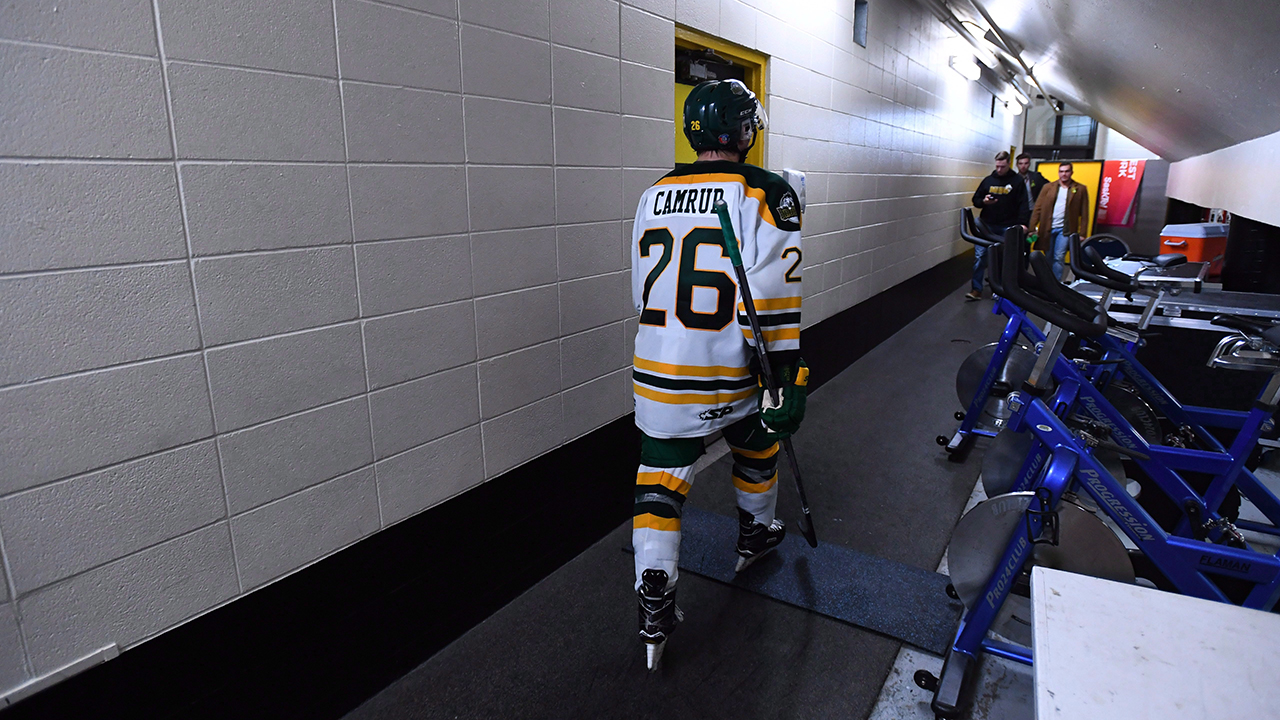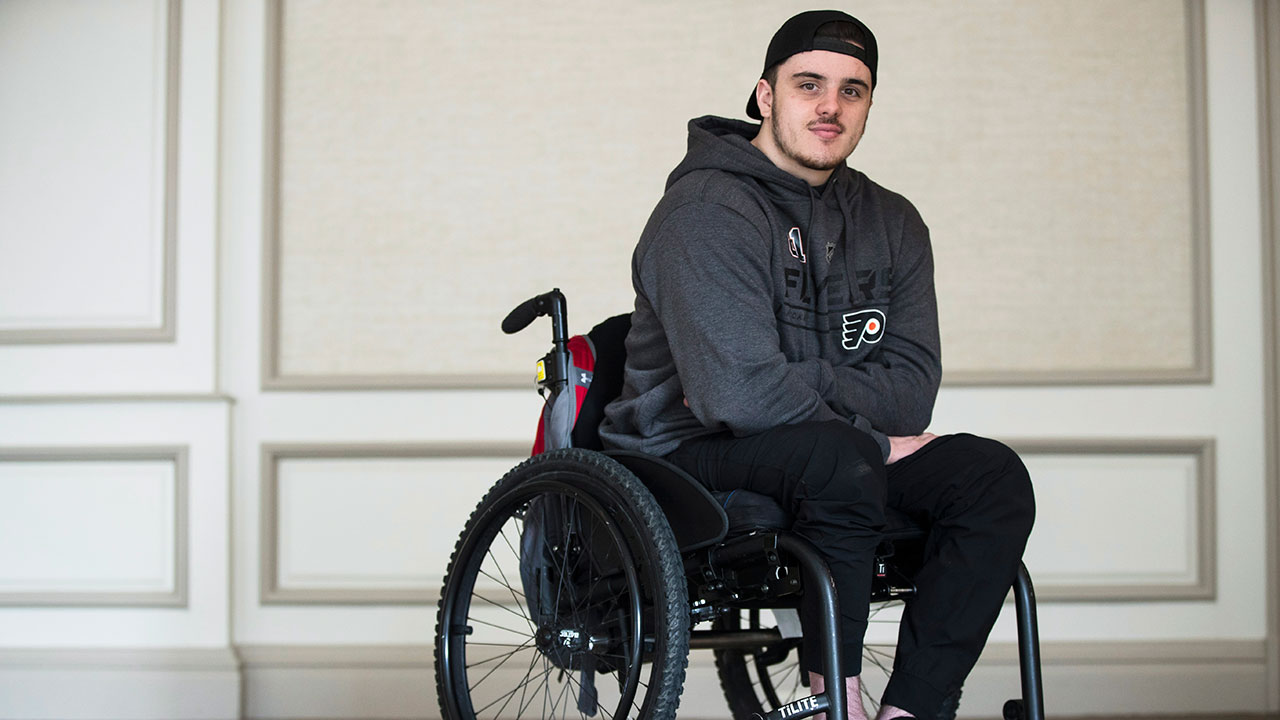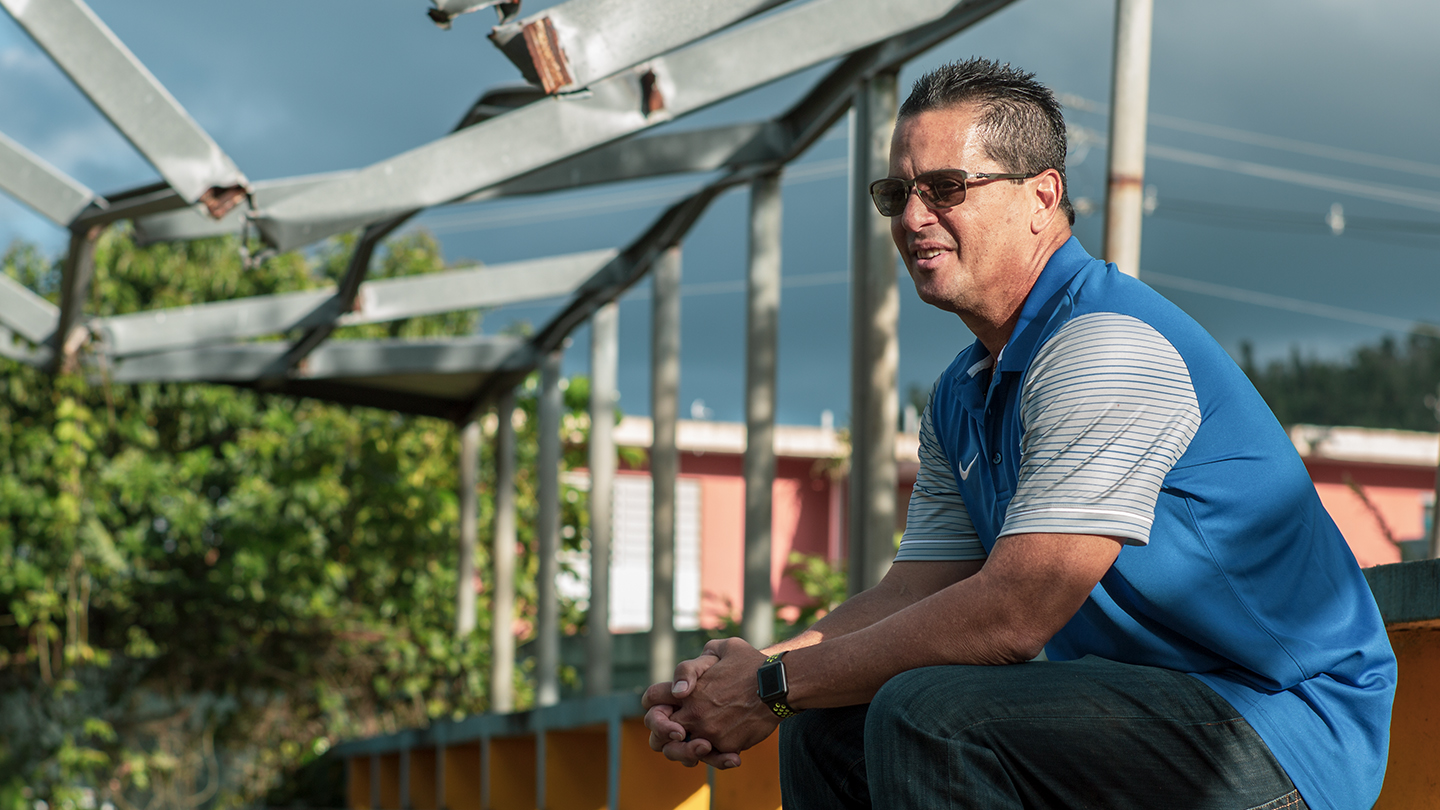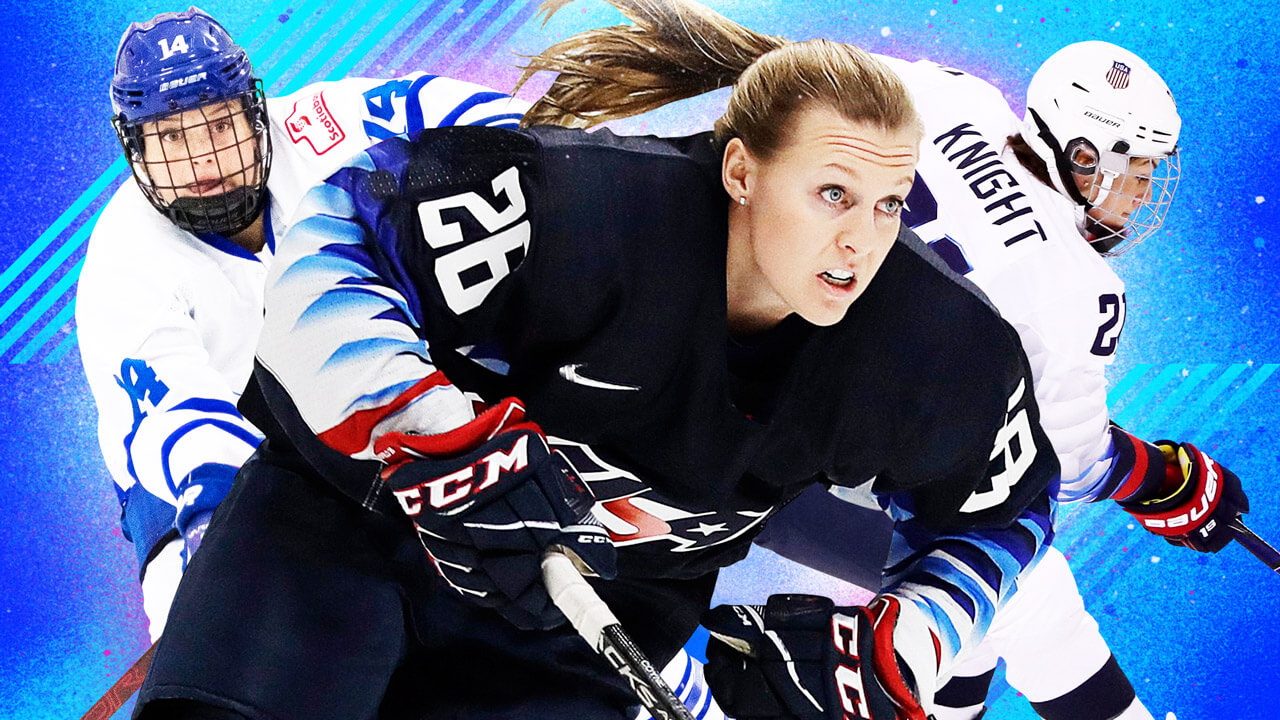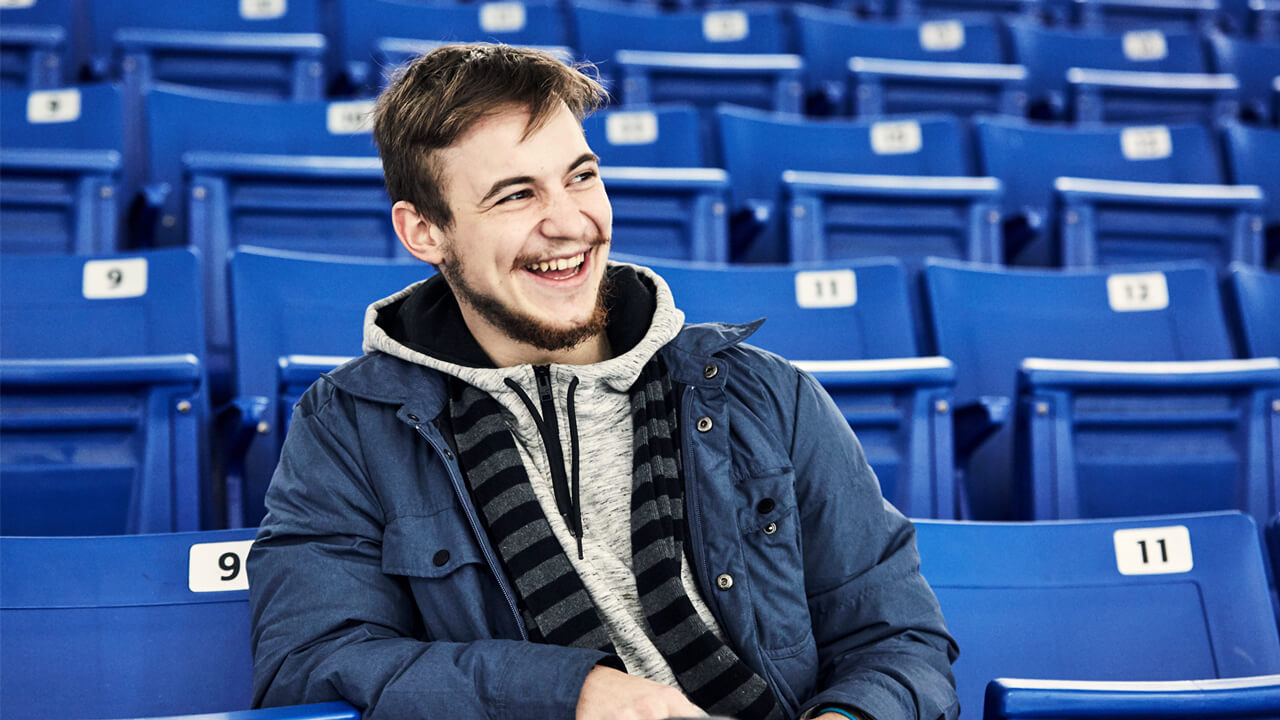Every trip back to Humboldt was significant for Kaleb Dahlgren. The entire time he was in hospital recovering from injuries that should have severely limited his physical abilities, Dahlgren was adamant he wanted to go back. On his second day out — less than a month after the Humboldt Broncos bus was torn apart — that’s precisely where he went, heading east from his Saskatoon home with his parents, Mark and Anita. Dahlgren visited the Grade 5 classroom he volunteered in at St. Dominic School and dropped by the local radio station, Bolt FM, where they were grieving the loss of, among others, Broncos play-by-play man Tyler Bieber. He also made sure to visit a woman in a long-term care home — one of the other spots he’d carved out time for in the year — who knitted him a quilt for his hospital stay. Finally, he chatted with staff at Elgar Petersen Arena while cleaning out his stall and, of course, stopped by to see his billet family.
Dahlgren returned for the Broncos home opener on Sept. 12, a night the entire country paused to check back in with the town and team that had been through the unimaginable. The media attention and support from far and wide was appreciated, but Dahlgren was there to connect with the community and see the guys. He was too old, at 21, to return to the Broncos. Three of the survivors did, though, including one of Dahlgren’s close buddies, Tyler Smith, who wasn’t quite physically ready to suit up for opening night, but was still working toward coming back. Of course, there was almost a full team of new Broncos to meet, too. Michael Clarke — the signature pickup in an off-season like no other — scored the first goal of Humboldt’s post-accident era.
There was barely time to wipe away all the tears before Dahlgren was back again in late September as a new member of the York University Lions. The team was on the Mark Cross Humboldt Strong Remembrance Tour, visiting the town and the places where Cross — a 2016 graduate of the Lions program and assistant coach with the Broncos last year — had grown up playing. Though not cleared for game action, Dahlgren’s skates actually hit the ice he’d previously battled for every inch on, as he took the pre-game warmup ahead of York’s exhibition match with the University of Calgary. Once the puck dropped, Dahlgren couldn’t really catch much of the action — there were simply too many people to speak with and squeeze. It was, naturally, an emotional time — all the visits were. But from the moment he first went back, sensing how devastated the town was, Dahlgren resolved to be there whenever he could. “I think it also helped me heal,” he says.
Saturday marks the one-year anniversary of the bus crash that forever impacted the entire Humboldt Broncos family. What to do with yourself in the wake of such an unspeakable tragedy doesn’t have a one-size-fits-all answer. Dahlgren started a new chapter at university, while maintaining a firm link to the team. Smith got himself back in a Broncos sweater as soon as possible only to find that the same colours that meant so much to him were also suddenly a conduit to difficult memories and feelings. Coming onto the scene from the outside, Clarke knew the community would need all the help it could get easing back onto its feet and just wanted to be part of the solution. These are the stories of three Humboldt Broncos in the year after the crash.
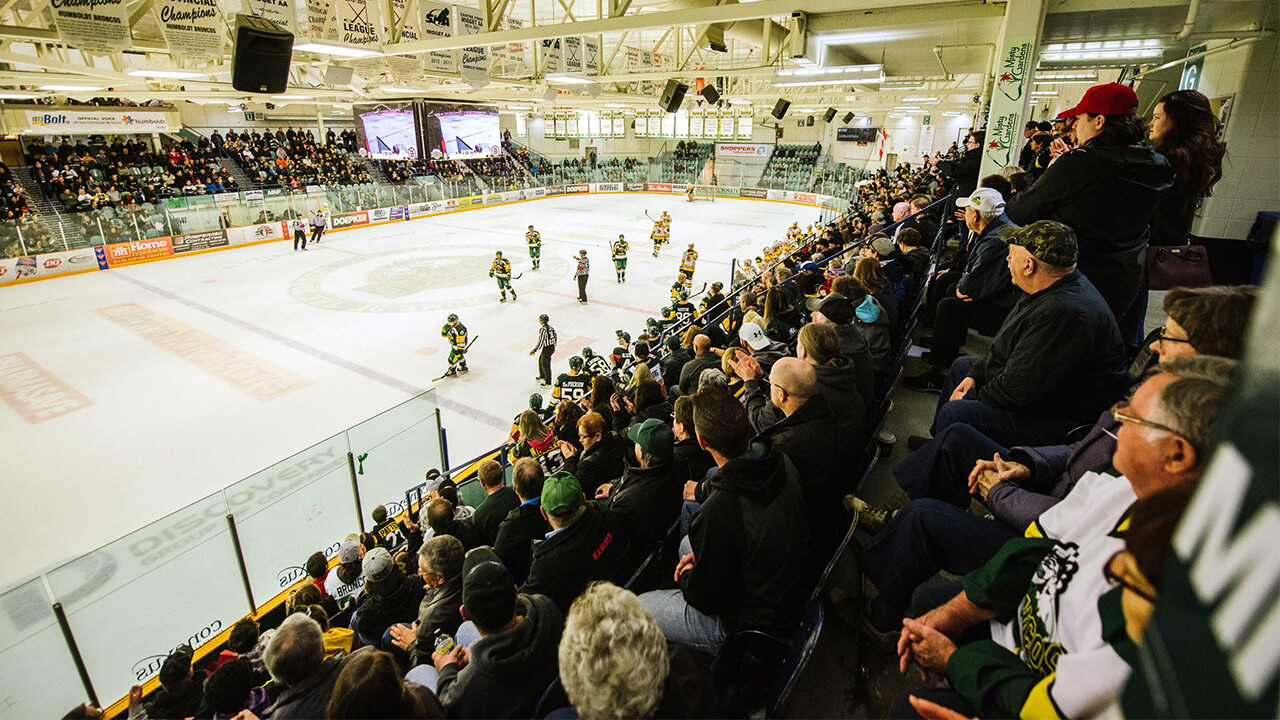
After a season that saw him toil for a couple Alberta Junior Hockey League squads, in addition to spending a brief period in the B.C. Junior Hockey League, Michael Clarke was looking for a change. Though he bounced around a bit, Clarke was a proven point-per-game talent. When the news he was available via trade found Jason Neville, the latter’s ears must have perked up. Neville served as assistant GM on last year’s Broncos, but was not involved in the April 6 crash that claimed 16 lives, including that of GM and head coach Darcy Haugan. When — after a period of mourning and memorializing — there was a consensus that Humboldt should ice a team in September, Neville threw himself into a one-of-a-kind rebuild. From his first conversation with Neville, Clarke was drawn to an opportunity some others respectfully declined. “I couldn’t turn it down,” he says. “For me, I wanted to be a part of something special [during] my 20-year-old year, and whether that was winning hockey games or helping a community heal, that’s what I wanted to do.”
A desire to make things even a little bit better also drove Tyler Smith, who was intimately tied to the situation, having played 42 games for the Broncos as a 19-year-old last season. As that campaign was winding toward a close, Smith had actually mentioned to Dahlgren and others that the 2018 playoffs would likely be his last rip in Jr. A. Then a moment from hell changed everything. “At first, I did not think I’d have a chance to play again, just with the nerve damage I’d received,” says Smith, who spent the majority of the summer trying to get well at home in Leduc, Alta. “They gave me a timeline of one to two years.”
Smith quickly began outpacing that prognosis. By August, he’d settled on trying to make a comeback. Smith’s body wasn’t ready for game action when training camp began, so he settled for unleashing his inner coach, mentally sorting all the new players and picking out who might crack the roster.
Clarke recalls the very outset of camp being coloured with uncertainty. No one knew what to expect beyond the fact that they’d all meet a bunch of fresh faces and the gaze of the entire country would be on them. The unique circumstance seemed to accelerate the typical bonding process. “It only took us — I’m going to say five or six days — into training camp and we were all really good friends and super tight,” Clarke says. “That’s something I haven’t had on any other junior team, so it really made the transition as easy as it could be.”

While the typical rituals served their purpose — tossing tape balls and barbs in the dressing room, getting together for movie and bowling nights — the returnees, Derek Patter, Brayden Camrud and Smith, brought an extra level of fellowship and motivation, along with permission to relax despite the grief and glare. “They each spoke at the start of the year, thanking us for what we’re doing,” says Clarke. “They actually said, ‘Don’t walk on eggshells. Everyone knows what’s happened, it’s over and we have to kinda [move past] that.”
Smith explains the goal of the message: “The main thing was just developing that trust factor and bond early,” he says. “Obviously coming into a situation like that, a lot of the young guys were pretty hesitant and pretty nervous about what to expect. It was more just making them feel comfortable, allowing them to be themselves and just play hockey.”
Humboldt’s new pieces clicked into place quickly under the guidance of coach Nathan Oystrick. After dropping both games of a home-and-home with Nipawin to kick off the year, the Broncos put together six straight wins. While the team was green, it featured a number of 20-year-olds, and their collective experience paid off. Very early on, Clarke got that wonderful odds-defying feeling. “We saw how good we actually were and how we could surpass the expectations set by everyone saying that we weren’t going to be that great,” he says.
By the end of October, Humboldt was 12-5-2. About halfway through that month, Smith began practicing full-time with the squad. It wasn’t always easy. Gearing up to go on the ice — even for practice — took gumption each time he did it. Still, on Nov. 2, when Humboldt hosted the Melville Millionaires, No. 15 was in the starting lineup, just as Patter and Camrud had been for their return at the opener. There was no captain in Humboldt this season, just four assistant’s A’s spread across the sweaters of Clarke and the three survivors.
“‘We play for them’ is a really true statement,” Smith told the Saskatoon StarPhoenix on the eve of his return, referencing the 16 “angels” who lost their lives. “I just really want to play for them.”
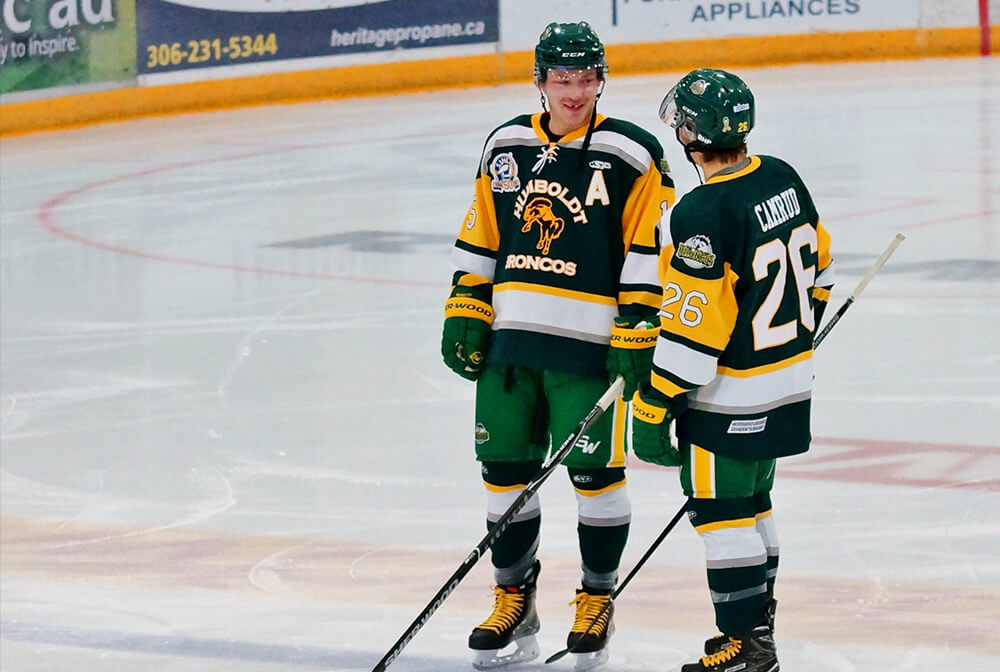
As Smith got used to being back on the ice in Saskatchewan, Dahlgren was adjusting to life in Toronto. Much of his first semester at York was spent recovering from an ankle injury that had nothing to do with the accident. While running a clinic for kids during the Mark Cross Remembrance Tour, a little tyke got his stick wedged between Dahlgren’s skate boot and blade, and down he went. “I was already going for [therapy on] my neck and my back, so I just added the ankle on to it,” Dahlgren says with a grin.
Given that he’d been one of the most visible survivors over the summer, speaking about the crash and representing the team at events like the 2018 NHL Awards, Dahlgren arrived at York with a higher profile than your average recruit. “I had tons and tons of requests because, I was the only [person who wore a letter] from last year left,” he says of the media attention. He decided to do one interview, mostly to thank people for the support — #SticksOutForHumboldt became an international movement and $15.1 million was raised via GoFundMe — that was pouring in. The requests kept coming, though, and Dahlgren eventually just viewed answering them as a continuation of his leadership role to speak on behalf of the squad. Still, he checked in with his teammates early on to make sure they were okay with him essentially becoming their unofficial spokesperson. He quickly had their backing — many of the 13 who made it through the crash weren’t in a rush to share.
“I think that was something — in my estimation from talking to some of the [survivors] — they all wanted, because they knew Kaleb would be able to handle all of that attention,” says York coach Russ Herrington, who travelled to Saskatchewan with a handful of Lions for Cross’s memorial service last April.
That Dahlgren could even speak on his own behalf after the crash was something of a minor miracle. His parents were in Nipawin waiting for the Broncos bus to arrive when they heard about the collision. They jumped in the car and came upon the devastating scene just after the survivors — including their son — had been whisked away. When Dahlgren’s family doctor saw the young man’s brain scans, his immediate conclusion was that Dahlgren would have lost the ability to speak and walk. He called Anita and Mark — both nurses — to convey his sympathy. The gesture was appreciated, but it soon became apparent some wires were crossed. “[The doctor said], ‘I know he’s not talking to you guys,’” Dahlgren recalls. “My parents were like, ‘What do you mean he’s not talking? He’s talking to us right now. He just chirped one of his friends.’”
Because of the head trauma he sustained, there was no firm sense of when Dahlgren would be cleared for contact. Despite his rapid recovery, some medical professionals suggested he take a year to completely rest and recuperate. Dahlgren — a high-school honour-roll student — went the other way. He figured the play was to move to Toronto for school and see what happened.
Just as Patter, Camrud and Smith wanted to let the new Broncos know there was going to be a spirit of openness on the team, Dahlgren had a similar message for the Lions: Treat me the same as any newcomer, saddle me with the usual rookie responsibilities. “We had the discussion before our first team meeting that he wanted to be able to have a brief chat, introduce himself but also let everyone in the room know, ‘It’s okay to talk to me about what happened,’” says Herrington. “‘It’s part of my story and I have no problem sharing.’”

The top scorer on this year’s Broncos spent the season in the exact same room that housed the young man who paced the squad last year. Logan Schatz was killed in the crash and it meant the world to Clarke to know Schatz’s parents welcomed the idea of him staying in their son’s former space, at the home of billets Amanda and Colin Brochu. “His mom and dad still come and visit quite often,” Clarke says, speaking on the eve of the SJHL playoffs. “They always say hello and they thank me for playing here.”
In general, the gratitude was tough to miss. Clarke says it wasn’t uncommon for a handful of Broncos to be at Tim Horton’s and have somebody buy lunch for the lot of them. The team does all kinds of work in the community, visiting schools and serving lunches. Other Broncos parents who lost their kids also reached out to offer thanks. “With what they’ve been through, seeing the Broncos back on the ice, [Patter and Camrud] being able to play the game they love again, they’ve kind of said, ‘We really appreciate it,’” Clarke says.
As unmistakable as the warmth of the town was, the 2018–19 Broncos had a tangible sense of the shadow they toiled in. “Every day you come in the room and you sit in the same stalls that those guys did,” Clarke says. “During practices and games you look up, their banners are in the rafters with their jersey numbers. It’s never going to be a normal hockey season, guys aren’t going to come in and say, ‘It’s just another day at the rink.’ What I feel is that every time I get to the rink [regardless of how you feel that day], you go out and put it all on the line to honour those guys.”
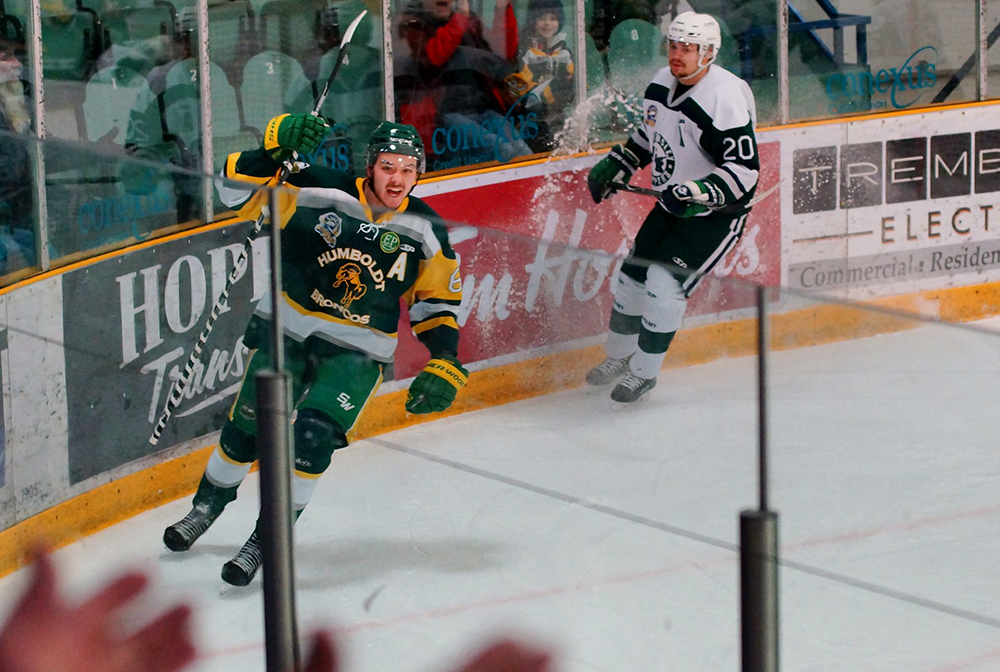
It’s a delicate balance, paying tribute while trying to turn a page. For Smith, those stalls belonged to a previous set of his brothers, a group of young men who were cut down before they could grow up. Though his new teammates surged when he returned to that dressing room — going 8-1-1 with Smith in the lineup — the victories failed to deliver their usual positive vibes. “It was just overwhelming,” Smith says of the whole experience of returning to the team. “It was too much for me mentally. Physically, as well, my body went through quite a bit, so putting myself back into [a contact sport] right away was still scary and I was still battling with that part of it.”
The notion of stepping away for your own good was already well established in Humboldt. Former Broncos president Kevin Garinger, such a public face for the team in the wake of the crash, did not seek re-election to his post in the summer. Neville, too, realized early on in the season that he needed to get some distance.
With thoughts weighing heavy, Smith leaned on his inner circle. Already burdened by so much, he was also combatting the feeling he’d be letting people down if he left. “I like to consider myself a selfless person, so making this decision was kind of — I sometimes thought —me being selfish,” Smith says. “But in a situation like this, sometimes you just have to be selfish, so I had to overcome that.”
Every influential person on the team and in his life offered nothing but understanding. Reassured he had to do whatever was required to properly heal his body and mind, Smith headed back to Leduc about one month after his debut. “I give him tons of credit for returning and trying it out,” Dahlgren says. “He said it was just hard — the dressing room is the exact same, everything is the exact same.”
Smith took a weeks-long breather before joining the Jr. B Leduc Riggers, a squad featuring some buddies he’d grown up playing with. Dahlgren was delighted to hear how Smith — a role player who had just three total goals in 52 career SJHL games — notched eight points in 13 outings to close out the Riggers’ year. At home with parents Curtis and Melanie, he found himself in a much better place. “It consumed me,” Smith says of the difficulties in Humboldt. “When I went back to play Jr. B in Leduc, it was more just the fact I could have fun and I didn’t have a lot of things to worry about. I could just do my own thing.”

More change visited the Broncos before season’s end. Just after Christmas, Coach Oystrick stepped away from the club. In the wake of that last departure, Scott Barney, one of Oystrick’s assistants, added head coaching duties to a title that already included general manager.
Given the backdrop of the season, merely competing in all 58 SJHL games would have been a monumental achievement for Humboldt. As it stands, the Broncos put together an impressive 35-19-4 record and jumped out to a 3–1 series lead on the Estevan Bruins in the first round of the playoffs. A double-overtime victory in Game 5 gave Estevan new life, though, and the Bruins got another extra-time win on home ice in Game 7 to end Humboldt’s season.
Before the curtain fell, Smith made another trip back to Humboldt. He visited his billets, Paul and Nancy Jefferson, and attended Games 3 and 4 of the series — the final two Broncos victories of the year. Smith was just starting out on the six-and-a-half hour drive back to Leduc, heading west across the Prairies, when he reflected on the peace of mind it brought him to know he had attempted a return and would never have to live with questions or regrets over what might have been. “For the time I was there, the guys on the team were awesome to me,” he says. “I definitely made some new friendships that will be lasting friendships.”
Clarke is firmly in that new group of pals, and if Smith wants to visit him next year, he’ll almost certainly find Clarke playing hockey at a yet-to-be-determined Canadian university. Smith is eligible to play Jr. B as a 21-year-old next season in Alberta, but he hasn’t committed to anything that far down the road. Twelve months after the crash, he’s got an exciting April planned. First, he’s off to Halifax with his brother, Graydon. Later in the month, he’s heading to Europe for the first time in his life, visiting a couple buddies in Austria before they head out to Hungary and the Czech Republic. Young fun at its best. “It’ll be nice to get away and do those trips that more or less keep my mind off things,” he says.
For Dahlgren, April closes the book on his first year at York. He’s still not cleared for game action and, given the extent of his brain injuries, there’s really no firm assurance that will ever happen. Regardless of whether or not there’s a medical green light before next season, he’ll be back at school working toward his long-term goal of becoming a chiropractor and continuing on with Dahlgren’s Diabeauties, a program he started in Humboldt to help kids who — like himself — live with Type 1 diabetes. He loves that what determines how well you do in university is the amount of work you put into things on your own, outside class hours. It suits the positive, self-starter he’s always been. And in the rare moments those two attributes abandon him, it doesn’t take Dahlgren long to reset. “In my low points, I just think of how lucky I am to be where I am and to do it for the 16 who can’t,” he says. “That’s been my motivation [and will be] for the rest of my life.”
Designed by Sasha Barkans. Edited by Evan Rosser.

